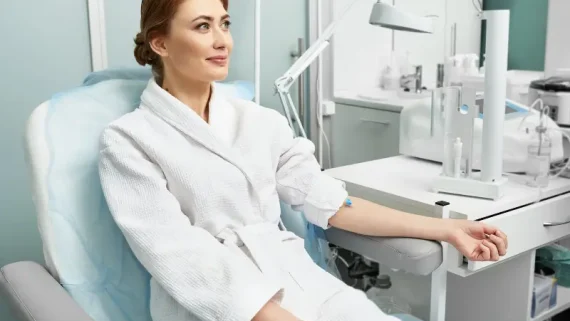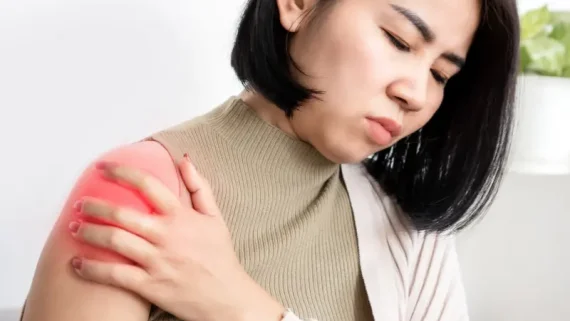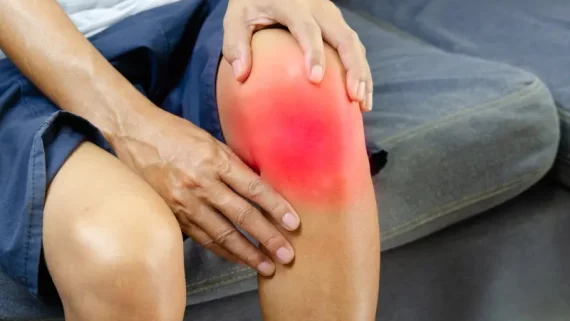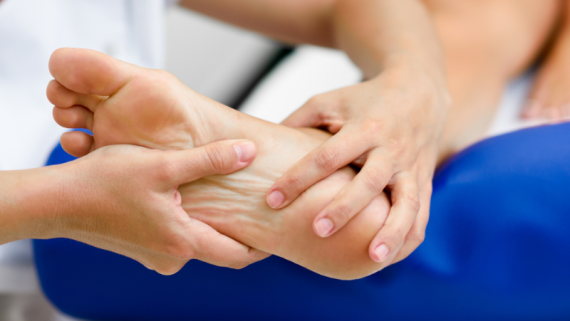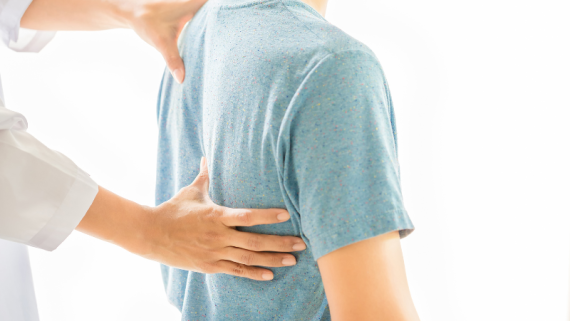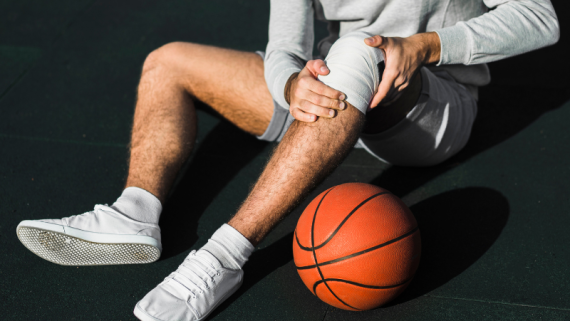Back pain caused by a herniated disc or sciatica affects thousands of people every year. With long working hours, poor posture habits, and increased sedentary lifestyles, spine-related pain has become extremely common. Many patients in Kolkata look for safe and effective non-surgical treatments that offer lasting relief without long recovery periods. Among the advanced options available today, Ozone Therapy has gained significant attention for its ability to reduce pain, heal damaged tissues, and improve mobility. This blog explains how Ozone therapy for herniated disc and Ozone therapy for sciatica pain works, along with its benefits, procedure details, and effectiveness. It also highlights why more patients are choosing Ozone therapy in Kolkata for spine-related pain conditions.
Understanding Herniated Disc and Sciatica Pain
A herniated disc occurs when the soft, gel-like material inside a spinal disc pushes out through a tear in the disc wall. This bulge often compresses nearby nerves, leading to pain, numbness, tingling, or weakness. When the herniation presses on the sciatic nerve, it leads to sciatica—a sharp, shooting pain that travels from the lower back to the leg. Many patients seek sciatica treatment because the pain can disrupt daily activities, affect sleep, and limit movement. Herniated discs are commonly caused by:
- Age-related degeneration
Sciatica is a common yet often misunderstood condition that causes sharp, shooting pain radiating from the lower back down to the legs. It occurs due to irritation or compression of the sciatic nerve, the largest nerve in the human body. The condition not only disrupts mobility but can also interfere with daily life if left untreated. The right sciatica pain relief plan depends on accurate diagnosis, timely intervention, and expert medical care. This blog suggests the reasons for sciatica, available treatments and a sciatica pain in Kolkata that the reasons for the doctor can help patients make permanent recovery.
What Is Sciatica?
Sciatica refers to pain that originates in the lower spine and travels along the sciatic nerve, extending through the buttocks, thighs, and sometimes the feet. Unlike general back pain, sciatica typically affects only one side of the body.
Common Causes of Sciatica:
- Herniated Disc: A slipped or ruptured disc pressing on the nerve roots.
- Spinal Stenosis: Narrowing of the spinal canal leading to nerve compression.
- Degenerative Disc Disease: Age-related wear and tear causing nerve irritation.
- Spondylolisthesis: Slipping of one vertebra over another, pinching the sciatic nerve.
- Muscle Spasms: Tightening of mu
“When even talking or brushing your teeth feels like electric shocks in the face, that’s when expert care matters.” Trigeminal neuralgia is one of the most unbearable pain disorders a person could suffer from, but with the right diagnosis and treatment plan from a dedicated Trigeminal Neuralgia Specialist, the pathway towards healing and restoration is much more manageable. Kolkata Pain Relief in Kolkata aims to combine cutting-edge medical care with patient-centered, compassionate treatment.
What Is Trigeminal Neuralgia?
Trigeminal neuralgia (TN) is a chronic neuropathic facial pain syndrome that involves the trigeminal nerve- the fifth cranial nerve, which is responsible for sensation in the face. Pain is often presented in paroxysms like quick, stabbing, electric shock-like bursts of pain lasting seconds to minutes It usually is unilateral (one-sided) and can be triggered by light stimuli such as talking, eating, brushing, washing the face or even from wind Patients may not have pain between paroxysms, or may have some dull ache or burning pain in their face (especially in atypical cases) Because TN can mimic dental or sinus pain, misdiagnosis is very common in the early phases of the disease. This is why it is crucial to see a Trigeminal Neuralgia Specialist early.
Signs of Trigeminal Neuralgia: Be Alert
Typical Trigeminal Neuralgia Symptoms experien
Frozen shoulder, also known as adhesive capsulitis, is a painful condition that leads to stiffness and restricted movement in the shoulder joint. It develops gradually, worsens over time, and often takes months or years to improve without proper care. The simplest technique to handle this circumstance includes physiotherapy. The role of physiotherapy in frozen shoulder treatment is vital, as it restores mobility, reduces stiffness, and helps patients regain functional use of their shoulder. This blog explains the phases of frozen shoulder, the importance of physiotherapy, and when to seek guidance from a frozen shoulder specialist in Kolkata. It explains the phases of frozen shoulder, the importance of physiotherapy, and whilst trying to find guidance from a frozen shoulder specialist in Kolkata.
Understanding Frozen Shoulder
The shoulder joint is surrounded by connective tissue called the capsule. In the frozen shoulder, this capsule thickens and tightens, limiting the joint’s ability to move freely. Common Causes and Risk Factors:
- Diabetes (a major risk factor, seen in up to 20% of patients with frozen shoulder)
- Prolonged immobility due to injury or surgery
- Thyroid disorders
- Parkinson’s disease
- Age (commonly between 40–60 years)
- More prevalent in women than men
Early diagnosis ensures timely inter
Knee pain is one of the most commonplace musculoskeletal lawsuits affecting human beings of all age companies. Whether it’s miles because of injury, arthritis, or degenerative adjustments, untreated ache can significantly lessen mobility and best of life. Fortunately, present day medicine now provides more than one knee pain remedies that deal with both the underlying reason and lengthy-term healing. In this blog, we are able to discover the most effective advanced knee pain treatments, whilst seeking for expert care, and the role of a knee pain specialist in Kolkata in helping sufferers regain mobility.
Understanding Knee Pain
The knee is a complex joint that bears most of the body’s weight. It consists of bones, cartilage, ligaments, and tendons working together to allow smooth movement. When any of these structures are damaged due to injury, overuse, or age-related changes, knee pain develops. Common causes include:
- Osteoarthritis (wear and tear of cartilage)
- Rheumatoid arthritis (autoimmune joint inflammation)
- Meniscus tears
- Ligament injuries (ACL, MCL tears)
- Patellofemoral pain syndrome (kneecap-related pain)
- Bursitis and tendonitis
Identifying the cause early helps doctors recommend the right orthopedic treatment for knee pain and prevent progression.
Conservative Knee Pain Treatments
Lower back pain is one of the most frequent reasons people visit clinics and hospitals today. Studies suggest that nearly 80% of adults experience back pain at some point in their lives, making it one of the most common musculoskeletal problems globally. Identifying the causes of lower back pain and understanding when to searching for clinical help is essential for effective treatment and lengthy-time period comfort. This blog highlights the most common lower back pain causes, risk factors, and the point at which visiting a lower back pain doctor or back specialist doctor becomes necessary. For individuals in eastern India, advanced options for lower back pain treatment in Kolkata are available with experienced orthopedic and physiotherapy experts.
Understanding Lower Back Pain
The lower back, or lumbar spine, supports the upper body and allows flexibility for movement. It also protects nerves that run from the spine to the legs. Because of its complex structure involving muscles, ligaments, discs, joints, and nerves, the lumbar spine is prone to injury and strain. Pain can range from a mild ache to severe discomfort that limits daily activities.
Common Causes of Lower Back Pain
1. Muscle or Ligament Strain
One of the leading lower back pain causes is overuse or sudden injury to muscles and ligaments. Activities such as heavy lifting, improper posture
Waking up with a sharp, stabbing pain in your heel can be a jarring start to the day. For millions, this morning agony is a familiar symptom of plantar fasciitis, a frustrating and often debilitating condition. This inflammation of the plantar fascia, a thick band of tissue running across the bottom of your foot, can make every step feel like a chore. The good news is that for most people, plantar fasciitis is not a life sentence. With a combination of a proactive approach, diligent care, and professional guidance, it is possible to find a long-term cure. This complete guide will walk you through the causes, treatments, and prevention strategies to help you finally say goodbye to heel pain. What Exactly is Plantar Fasciitis? The Root Cause of Your Heel Pain To effectively treat the problem, you must first understand it. The plantar fascia is a crucial ligament that supports the arch of your foot and acts as a shock absorber. When this ligament is subjected to excessive tension and stress, tiny tears can occur. Over time, these small injuries lead to inflammation and pain, particularly at the point where the fascia connects to the heel bone. Several factors can contribute to this stress:
- Overuse and Repetitive Strain: Activities like long-distance running, ballet, or even a sudden increase in physical activity.
- Improper
For millions, chronic back pain is more than just a nuisance; it’s a relentless force that dictates every aspect of life. Simple activities like walking, sitting, or even sleeping can become a struggle. For decades, the primary solution for severe, persistent back pain was traditional open surgery—a procedure that often came with a lengthy and painful recovery, a large incision, and significant risk. Today, the landscape of pain management has been revolutionized by a ground-breaking approach: Spine Endoscopy. This advanced, minimally invasive procedure is changing how we view back pain treatment, offering a powerful, non-surgical alternative that promises faster recovery and a return to a vibrant, active life. The Hidden Truth About Back Pain & Traditional Surgery Back pain is a complex issue, often stemming from conditions like a herniated or slipped disc, sciatica, or spinal stenosis. When conservative treatments such as physical therapy and medication fail, surgery has long been the last resort. Traditional spine surgery involves a large incision, cutting through muscles and tissues to access the spine. While effective, this traumatic process often leads to prolonged hospital stays, significant post-operative pain, and a recovery period that can last for months. What is Spine Endoscopy? The Minimally Invasive Revolution Spine endoscop
Sports injuries can range from mild strains to severe ligament tears, causing discomfort, downtime, and long-term joint issues. Traditional treatments often rely on rest, medication, and physiotherapy. However, advancements in regenerative medicine—particularly stem cell therapy—are revolutionizing how athletes and active individuals recover. This treatment not only speeds up healing but also significantly reduces pain without the need for surgery.
How Stem Cells Help in Sports Injury Recovery
Here we explain how stem cell therapy works by harnessing the body’s natural healing mechanisms:
1. Reduces Inflammation
Injuries often trigger inflammation that causes pain and restricts mobility. Stem cells release anti-inflammatory agents that calm this response, providing fast pain relief.
2. Promotes Tissue Regeneration
Stem cells have the unique ability to transform into specialized cells such as muscle, tendon, ligament, or cartilage cells. This helps regenerate
Are you experiencing a nagging pain that travels from your lower back, down through your buttocks, and into your leg? You’re not alone. Many people experience various forms of back pain, but when it follows this specific path, it’s often a tell-tale sign of sciatica. While back pain can be a vague term, sciatica refers to a distinct set of symptoms caused by the irritation or compression of the sciatic nerve, the longest nerve in your body.
The good news is that for most individuals, effective relief from sciatica and its underlying causes can be found through non-surgical treatments. Understanding whether your pain is indeed sciatica, what’s causing it, and the available treatment options is the first step towards a pain-free life.
What is Sciatica?
Sciatica isn’t a condition itself, but rather a symptom of an underlying problem affecting the sciatic nerve. This nerve originates in your lower spine, branches through your pelvis, and extends down each leg, controlling muscles in the lower leg and providing sensation to the thigh, leg, and foot. When something compresses or irritates this nerve, it results in the characteristic pain, numbness, tingling, or weakness associated wi

